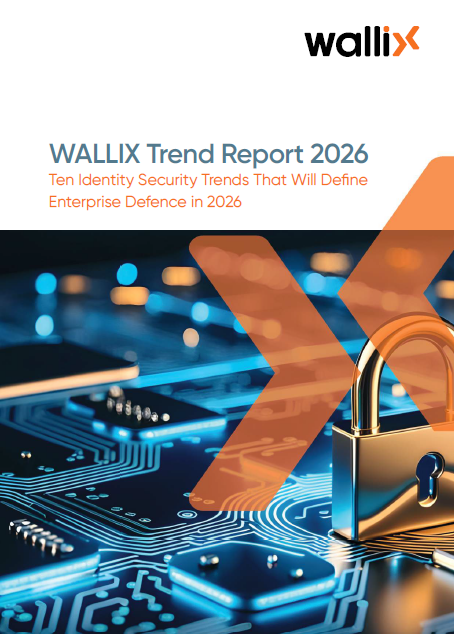PAM for SMBs: A Technical Perspective on Modern, Cloud-Based Solutions
Privileged access continues to be a major source of risk in organisations of all sizes. While large enterprises have long established strategies for managing administrator-level access, many midsize enterprises (MSEs) and small and medium-sized businesses (SMBs) are still working to put effective controls in place. Yet the need is no less critical. Whether it’s domain administrators, infrastructure engineers, or external support partners, anyone with elevated access poses a potential pathway into the organisation’s most sensitive systems.

Traditional PAM Challenges for MSEs and SMBs
Historically, Privileged Access Management (PAM) tools were built with large organisations in mind, those with internal infrastructure, specialist teams, and the resources to handle complex deployments. These platforms typically required multiple on-premises components, from credential vaults to session monitoring servers, all of which needed to be maintained, patched, and integrated into existing identity systems. For MSEs and SMBs, this has often made PAM inaccessible, not because the risks are different, but because the tools didn’t reflect their operational reality.
Recognising particular challenges, vendors have in recent years introduced cloud-based versions of their platforms. Some have shifted management interfaces and reporting tools into the cloud, but still require local software components to be deployed and maintained. This hybrid approach may reduce infrastructure to some extent, but it does not eliminate operational overhead. It still assumes that internal teams will manage updates, maintain uptime, and address issues when things go wrong.
The Advantage of Fully SaaS PAM Platforms
This is where fully managed, software-as-a-service (SaaS) PAM solutions start to make sense for MSEs and SMBs. These platforms are designed to remove the infrastructure challenge entirely. There is no need to install software locally or manage physical appliances. Instead, secure tunnels, often using standard IPsec or TLS encryption, link the organisation’s network to the PAM provider’s cloud infrastructure. All critical services, from password vaulting to session recording and policy enforcement, are hosted and maintained by the provider.
One such solution is WALLIX One PAM Core, which has been developed specifically for smaller and midsize organisations that require enterprise-level access security without the operational weight. The platform delivers agentless privileged access management, meaning that administrators and internal users can access protected systems without the need for any local software installations. It provides oversight across both IT and OT infrastructure and handles all system maintenance, software upgrades, updates, and availability, through a cloud-managed model.
For businesses that also need to provide secure access to third-party contractors or remote partners, WALLIX One PAM extends these capabilities to include external users as well, following the same agentless, infrastructure-free approach.
Both offerings use a single-tenant cloud architecture, which ensures that each customer environment is fully isolated, an important consideration for performance, data security, and compliance. Unlike shared environments, single tenancy supports stronger guarantees around data sovereignty and operational resilience.
The deployment model of WALLIX One PAM Core is straightforward. Once the secure tunnel is established and initial configuration is completed, the day-to-day management of the system focuses on what matters most: who has access to which systems, under what conditions, and how that access is being used. WALLIX handles the rest, scaling, uptime, patching, backups, and failover. This means that IT managers can concentrate on defining access policies and monitoring activity, rather than maintaining infrastructure.
From a licensing perspective, the platform offers predictable, consumption-based pricing, using named or concurrent user models. This helps avoid the budgeting challenges that often come with traditional enterprise software, where costs can rise unpredictably as environments grow or user numbers change.
Deploying a cloud-based PAM platform does, of course, require some preparation. Network edge devices must support secure tunnel protocols, and organisations must be able to allocate sufficient bandwidth to maintain session reliability. It is also essential to review how the solution integrates with your existing directory services or identity provider to ensure user authentication and authorisation can be managed centrally.
Compliance is another key factor. WALLIX One PAM Core is ISO/IEC 27001 certified, and its cloud infrastructure is hosted on Microsoft Azure. For organisations subject to sector-specific obligations, such as those under the NIS2 directive, GDPR, or the UK’s Cyber
Essentials framework, it is important to verify that reporting, audit trails, and retention policies align with those standards.
A Solution Tailored to MSE and SMB Realities
Security leaders in MSEs and SMBs face increasing pressure to demonstrate that access to critical systems is controlled, monitored, and auditable. Whether from insurers, regulators, or executive leadership, the expectation is clear. However, meeting that expectation should not require an enterprise-sized team or budget. What is needed is a PAM solution that is technically robust, simple to deploy, and realistic to operate within the context of an MSE or SMB.
Agentless, SaaS-based platforms such as WALLIX One PAM Core deliver exactly that. It strips away the infrastructure complexity, reduces the time to deploy, and allows organisations to implement strong privileged access controls without building a new operational function around them.
Related resources
-
 WALLIX Trend Report 2026: The Identity Security Shifts Redefining Enterprise...
WALLIX Trend Report 2026: The Identity Security Shifts Redefining Enterprise...




